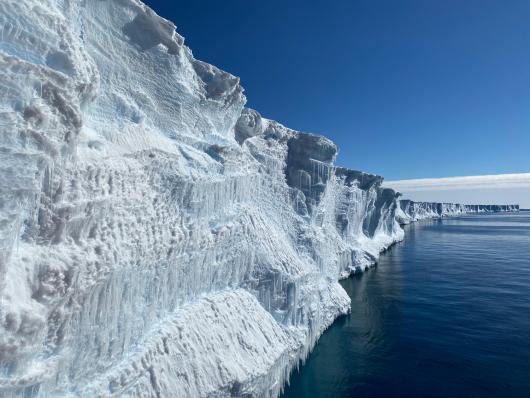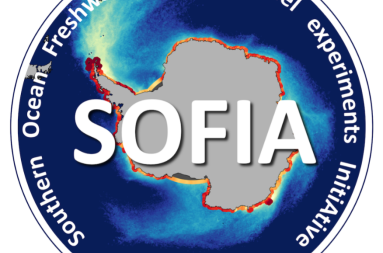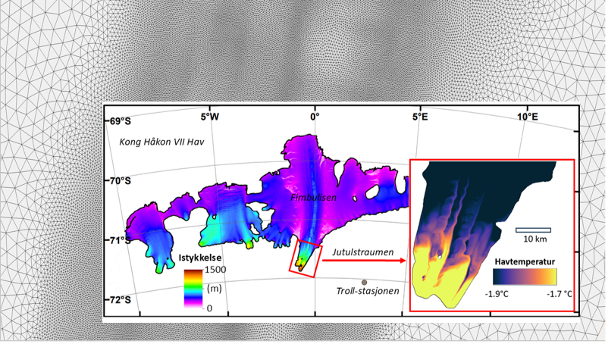As global temperatures rise, the Antarctic ice sheet and ice shelves are melting at an accelerating rate, releasing significant amounts of meltwater into the Southern Ocean. This impacts global climate, sea level, and the Southern Ocean ecosystem.

However, the discrepancies in temporal and spatial scales at which ice sheets interact with other components of the Earth System provide formidable challenges for state-of-the-art climate models to produce reliable projections of future Antarctic mass loss.
The Norwegian Antarctic Marine Modeling project aims to address these critical issues by employing advanced climate models and fine-scale simulations.
Enhancing climate predictions through collaborative modeling initiatives

Using the Norwegian Earth System model in the Southern Ocean Freshwater Input from Antarctica Initiative (SOFIA), the project improves our understanding of how Antarctic meltwater affects the global climate. As part of the EU-funded CRiceS project, the team analyses data from the coordinated multi-model SOFIA ensemble. This analysis focuses on the ocean around Antarctica and the potential feedback that increased melting may cause in a warmer future climate.
Advancing fine-scale modeling of ice shelf-ocean interactions
To better understand the interactions between ice shelves and the ocean, the researchers develop fine-scale models These metre-scale simulations are as computationally intensive as global climate models. They accurately resolve the physical processes that control melting at the ice-ocean interface. These simulations complement field observations of ocean properties and the complex ice shelf topography that controls the stability and evolution of the Antarctic ice sheet.

The illustration above displays a map of the ice thickness distribution of the Fimbulisen Ice Shelf that fringes the coast of Dronning Maud Land, Antarctica. The inset shows simulations of how warmer ocean water is trapped in basal channels at the underside of the floating glacier. The background illustrates the unstructured computation mesh of the Fimbulisen Ice Shelf model that allows us to resolve the circulation inside those basal channels at the metre scale.
Photo: J. Lauber, Norsk Polarintsitutt).